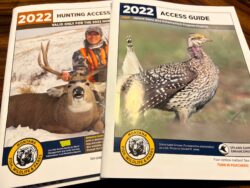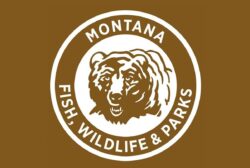There is an ongoing controversy between Resident and nonresident hunting. I saw some recent data for the Region 3 area of southwest Montana. This prime and traditionally excellent hunting area is dramatically changing. Access is a challenge as nonresidents buy up the land and shut down access to sportsmen. 
It is true that Nonresident sportsmen pay more for their state licenses, as it should be. Montanan’s end up paying higher rates when they travel to other states.
Residents of each state pay a smaller bill but may not have an edge on success of filling their tags. Many of the preferred Big Game trophy animals live on the now closed land buyouts. Once the weather gets cold, elk, deer, and other big game migrate, as they have for generations, to lower altitude, watersheds. These watersheds and valleys are also the preferred lands of the wealthy.
Many large landowners lease their land to Outfitters and guides. They may also charge $1,000, or more, a tine, for elk and deer. Nonresident family, friends, and those who pay a hefty access fee are welcome to fill their tags.
Here are some data examples.
A resident elk hunter pays $20 for a hunting license. A Nonresident pays $934 for the same license. In Region 3, there were almost 37,000 resident hunters. There were almost 9,000 nonresidents. The success rate for residents was 26%. Nonresidents success rate was 34%.
Antelope also showed a huge discrepancy. A Resident pays $14 for a license if they draw a permit. Nonresidents pay $205 for a license. The success rate for Residents is 59% while for nonresidents it is 85%.
Similar numbers are relevant for deer.
Success seems to come down to two factors, money, and access. You can’t fill a tag if you can’t get to the critters. Shooting them is the easy part. You can’t get to the critters, in region 3, if you don’t pay for access, outfitters, or a guide.
It would be interesting to know how many hours it takes to fill a tag. Surely there are excellent and dedicated nonresident hunters that put in their time. There are also those that shoot critters off the hood of a truck feeding on haybales. From the data, it is logical to assume that nonresidents hunt less than residents. Nonresidents have less vacation time to put in and weather may limit time to hunt. So, less time afield should mean less success. Obviously, that is not the case in region 3. This is not hunting, fair chase, or sporting.
The MTFWP works hard to encourage access. When you look at the recently published Hunting Access Guide, you can also see a wealthy segregation. Here are the available private land access data numbers. 
Region 1 103 projects
Region 2 109 projects
Region 3 152 projects
Region 5 210 projects
Region 6 218 projects
Region 7 over 381 projects.
The Upland Game Bird Enhancement Program Projects show a similar discrepancy.
Region 1 and 2 have only 4 projects
Region 3 has 6 projects
The rest of the regions boast far more projects and opportunities. Regions 1, 2, and 3 are the wealthiest and privately owned areas of Montana. Many landowners are nonresidents.
Large private landowners have the right to manage their land but what about the wild game herds? Aren’t wild big game herds public critters? Recent debates and potential regulations are challenging this. Wealthy landowners want to manage their wild game as they see fit.
Over half of our state public land is already landlocked and surrounded by wealthy landowners. Access is zilch. Sadly, some of the blame is on the shoulders of poachers, trespassers slob hunters. There are still resident and nonresident abusers of the land and sport. Landowners that have experienced this become reluctant to open their gates. There are only a few wardens per thousands of acres to patrol and catch violators.
Hunters need to do more to manage their sport. Cellphones allow for quick contact and photographic records. Clearing our ranks of loser hunters is needed. Landowners also need to give honest hunters some access.
Without some public input and deliberation, our access to wild big game is heading toward the path seen in Europe. Hunting and prime fishing will become the sport of kings and queens.
Like it or not, the numbers are what they are.
Montana Grant